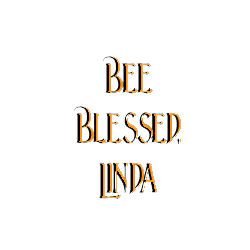Welcome to the Quilting Secrets Blog Hop! I had no problem deciding what my favorite secret is when Mrs. Pickles asked. It's glue.... glue sticks, school glue, and fabric glue.
I use glue sticks.....
1) ...when turning raw edges under to prepare pieces for applique. See the tutorial here.
2....when turning under hems before sewing. See tutorial here. You can find a tutorial here.
 |
| These table napkins have the hems turned under twice using a glue stick. The hems are pressed and they are ready to sew. |
4.... to baste the quilt sandwich in place. This is easiest for small quilts and wall hangings. It also comes in handy if you run out of spray basting before you get to the end of the quilt!
5. ... to keep batting in place on the back when doing trapunto or any item you want padded.
 |
| A piece of batting larger than the area that was to be quilted was glued to the back. After quilting, the batting was trimmed right up to the edge of the quilting. |
6.... to hold fabric in place for reverse applique.
7. ...to hold trim in place to keep it from creeping out of place when you sew. (In the case of the picture below, the trim needed to drop down just above the 1/4" seam line so that the very narrow lace would show and the glue stick held it in place beautifully!)
8. ...to hold the beginning and ending of a section in place while you sew.
9. ...hold a button in place so that it can be hand or machine sewn.
10. ...hold patches (such as those for scouting or military) in place so that you can sew them more easily.
11....hold hook and loop tape (such as Velcro brand) in place before sewing. Hook and loop tape that comes with an adhesive back will gum up your sewing machine needle very badly!
12....to hold the curled edge of a knit down smoothly for hemming.
13. ... to hold a zipper in place for easy sewing. No pins to sew over or remove. Just use glue in place of pins.
14. ... to match up stripes or plaids before sewing. (Use glue stick to hold the seam together in place.)
15. ...to hold tags and labels in place before sewing.
 |
| Rick-rack and both hearts were all glued together and glued in place before sewing the label on. |
17....to turn the raw edges in on handles you are making for tote bags.
I use school glue.....
18. ...to make perfect binding! There is a wonderful youTube tutorial by Sharon Schamber for making perfect binding for show quality quilts. Her secret tool? Elmer's School Glue and an iron! See it here.
19. ...when I need a resist to make a design when dying fabric. You can see a tutorial here.
I use fabric glue....
20. ...to permanently attach beads, silk flowers, or other trim to projects. (Tooth fairy pillow tutorial found here.)
Glue sticks are basically the same whether you pay $5 or 50cents. The more expensive glue sticks are a wonderful slim size that makes them easier to apply and less messy. It might be worth the extra cost to you! Since I wash my projects when finished, I don't worry about "acid free". The glue washes out of the fabric, except in the case of fabric glue.
Thank you, Mrs. Pickles, for putting together this Blog Hop. What a great idea! Sharing our secrets!!!
Now for a giveaway! (Giveway is now closed.)
Today’s lovely prize was donated by Chelsey Kilzer from The
Fat Quarter Shop. One very lucky commenter will win one $25 gift certificate to
be used online at The Fat Quarter Shop! The winner will be announced tomorrow!(You must comment for a chance to win.)
The Fat Quarter Shop was started by Kimberly Jolly in 2003.An avid quilter, Kimberly began her shop as a side business while still working a corporate position; cutting, packing and shipping right out of her house during evenings and weekends. From the very beginning, she was committed to top-notch service for every single order and customer. As the Fat Quarter Shop's reputation grew, Kimberly decided to make it a full-time operation. Her husband, Kevin, joined her not long after, and with his help, lots of hard work, and a tireless commitment, the store began to grow. Over the past few years a few more people have joined the staff!
They say, "As a team, we continue to branch out with the best fabrics, exclusive kits, quilt clubs, BOMs, and more. And we will always be driven by the passion that Kimberly founded the store upon, which is always giving you the best products and service!"
Tomorrow you will be visiting Barbara.
Christine @ Quilt Monter in my Closet December 31st
Sharon @ Vrooman's Quilts January 4th
Sue @ Quilt Times January 5th
Hayley @ Mrs Pickles Garden January 6th
Until then.... 










































